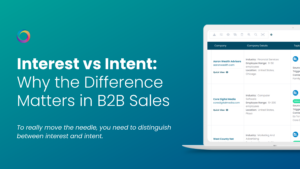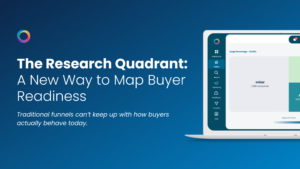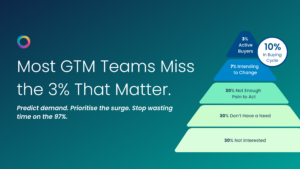It’s extremely important to remain competitive in this ever-expanding digital landscape we live in, and one way to do that is with effective multichannel marketing. Multichannel marketing refers to the combination of direct and indirect communication channels, online and offline. We’re pretty sure you know, but some of these channels include website, email, social media, SEO, content and mobile.
The huge benefit of multichannel marketing is that it gives people much more opportunity to see your product or service, and for them to discover it on a channel that they already actively use. This way, the initial interaction feels much more organic, and you are starting the inbound marketing process in a much more natural way.
The importance of multichannel marketing
You must be where your customers are, and to do so, you must be active on multiple different channels. Your prospective customers are everywhere, online and offline. There are so many ways to get in front of your customers, and if you already know where they hang out online, then you’ve already cut out the middle man.
So, what does it take to do multichannel marketing right? Here are three keys to success:
- Create and maintain a single view of the customer across all channels
- Establish a multichannel marketing platform
- Create consistent customer experience across all channels
In this blog post, we will look at three of the most common digital channels that you can use to get in front of your audience:
- Mobile
- Video
Video Marketing
Reports have shown that video is the most in demand and popular form of content online today, with more and more businesses including it in their marketing strategy. People don’t always have time to read lengthy articles anymore. They want to find out information and news quickly and easily, and video is a great way to do that.
Some reasons why you should be including video in your content strategy include:
- Improved SEO
- Stronger Consumer Attention
- Higher Engagement
- Greater optimisation opportunities
- Better email click-throughs
- Stronger emotional connection
- Increased customer conversions
According to the 2018 Digital Ad Spend Report by the Internet Advertising Bureau, £476 million more was spent in 2017 on smartphone video ads, making it the fastest growing online ad format. The report also revealed 2017 was the first full year that smartphones overtook computers for internet time.
Like everything else, preparation is key, and there are several questions you should ask yourself before committing to producing video content.
- Why are we doing this?
- Who is going to watch it?
- What do we want to gain from it?
- Where is it going to be viewed?
- When is it going to be live?
- What is the budget?
- What are the creative requirements? Do we need props or actors/extras?
- How will we do it?
- What equipment will we use? iPhone/Mac or DSLR?
The report also highlighted that smartphone advertising grew by 37.4% in 2017, to account for 45% of internet ad spend. Accompanying YouGov data showed podcasts, social media stories and learning a new skill on smartphones surged in popularity. 29% of people had more of an interest in social media stories while 30% said podcasts. Social media ad spends grew 38%, with 83% of social spend now going on mobile phones. This was a rise of 69% from 2016. Businesses are continually told to keep mobile devices
After producing and posting video content, you should analyse and review it before making another one, and continue to see where your strengths and weaknesses are.
Here is a list of some key performance indicators (KPIs) which you could use:
- View Count
- Clicks
- Awareness lift
- Ad recall
- Conversions
- Demos/Trials
- Sales
- Social Sharing
- Play Rate
- Comments
- Watch time
- View through rate
- Brand interest lift
- Completion rate
According to another report conducted by Wyzowl, one of the world’s leading explainer video companies showed that in 2017 63% of businesses are using video as a marketing tool. Out of those, 82% of businesses feel that video content is an important part of their marketing strategy. 99% of businesses will continue to use video throughout 2017, and 82% of businesses will be spending more on video in 2017. 83% of businesses believe that video gives them a good return on investment too.
The report also revealed that 79% of consumers would rather watch a video to learn about a product, than reading text on a page. 84% of consumers have been convinced to buy something after watching a brand’s video. 91% of consumers have watched an explainer video to learn about a product or service.
62% of those businesses said that the video on their homepage was an effective marketing tool. 97% said that their explainer video had helped increase user understanding of their product or service and 81% of businesses said that their explainer video has helped increase user understanding of their product or service.
Email Marketing
Email marketing is still one of the most popular forms of digital marketing, but how you should approach it has changed in recent years. Long gone are the days when you’d send out thousands and thousands of emails in one go, bombarding your audience with generic information and seeing miserable results. The 21st-century marketer needs to be much more strategic with their email marketing to see an impressive ROI.
For those marketing newbies who don’t know what I’m talking about, here is the trustworthy Wikipedia definition of Email Marketing:
“Email marketing is the act of sending a commercial message, typically to a group of people, using email. In its broadest sense, every email sent to a potential or current customer could be considered email marketing. It usually involves using email to send advertisements, request business or solicit sales or donations and is meant to build loyalty, trust or brand awareness.”
- Be clear in the subject area what is in it for the customer
- Start from the very first sentence and grab their attention
- Make it personal by using their name and tailoring you’re your content
- Keep their interest
- Mobile friendly
- Check your grammar and punctuation
- Be clear on what you want to do
- End on a high note
Depending on your audience and writing style, you can get personal here and end the email in an informal and friendly tone. Test which ones work best for your brand and review after a certain period and keeps track of the responses.
Mobile Marketing
As marketers, we know that effective mobile marketing is no longer an added extra, but an absolute necessity in today’s growing digital world. We are a world of scrollers, swipers and tappers and we use our mobile phones for just about everything. You can get in front of the right customers at the right time with an effective mobile marketing strategy. You can communicate and interact with potential leads and find out more about them. We have come up with our top 10 tips on how you can create a fool-proof mobile strategy.
Here are our top 5 tips for effective mobile marketing:
- Make your website mobile friendly
You must ensure your website is optimised for mobile devices and will load as quickly as possible for the user. Most internet users access the internet on their smartphones or tablets, with 80% of us having mobiles on us at all times. - Make mobile marketing the heart of your business
As marketers, you must recognise the potential with mobile marketing and make it central to your marketing strategy. You need to remember to include mobile marketing in your offline marketing plan as well. It should include links to your mobile website or app and consider giving customers an incentive to download it such as 10% off their first purchase or get involved in a loyalty scheme. - Mobile friendly content
When creating content for your website, you need to remember to keep mobile devices as your priority. Screens are much smaller, and you need to think about the text font. You also need to keep larger chunks of text to a minimum. You can use sub-headings, bullet points and images or videos to break up these sections of text. - Use social media effectively
Most of the engagement on social media comes from mobile devices, so it is vital you include it in your marketing strategy. You should have a presence across all available social networking sits by analyses where your target market is at most of the time. - Google My Business
When searching for a local company, most mobile users will simply type it into their search bar on their smartphone. If you want to get your business out there, you need to get yourself on the local map. Google My Business makes this easy and works on both mobile and desktop devices. When you are listed, mobile users will be able to locate your business when they search.
Conclusion
We know there are so many more channels out there, but in the digital marketing landscape we work in, we find these three are the most popular so far in 2019.




